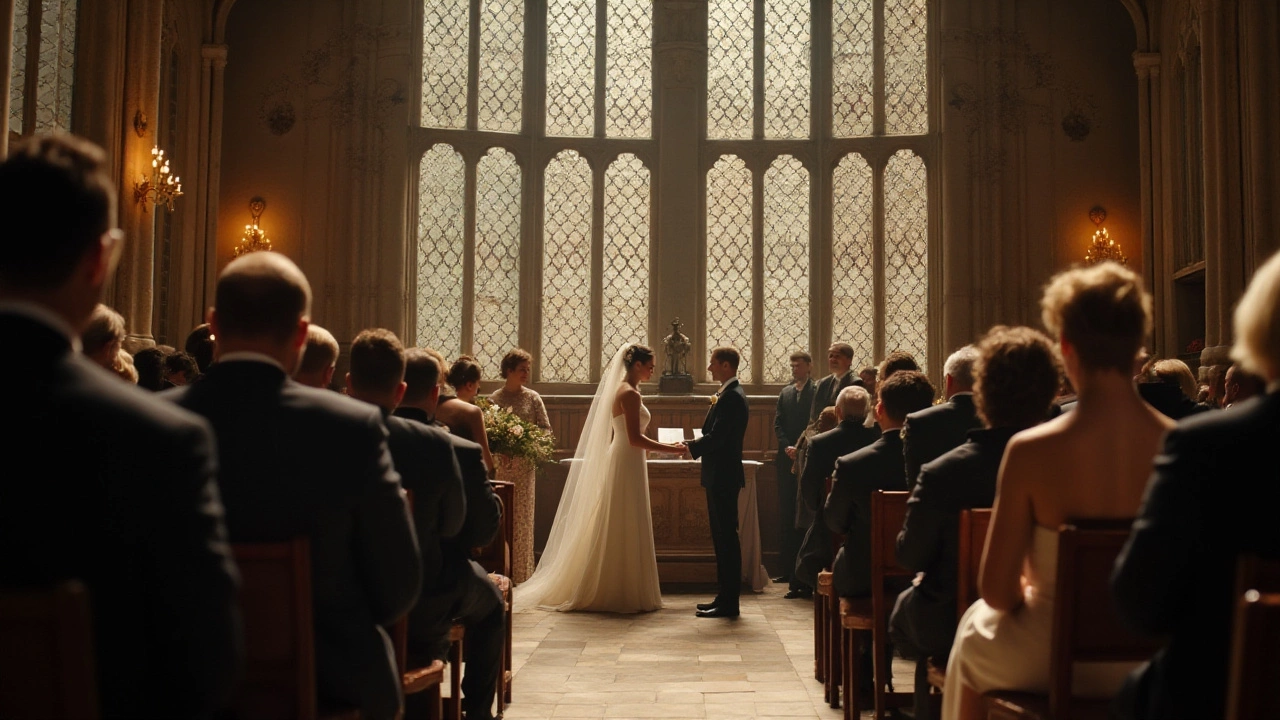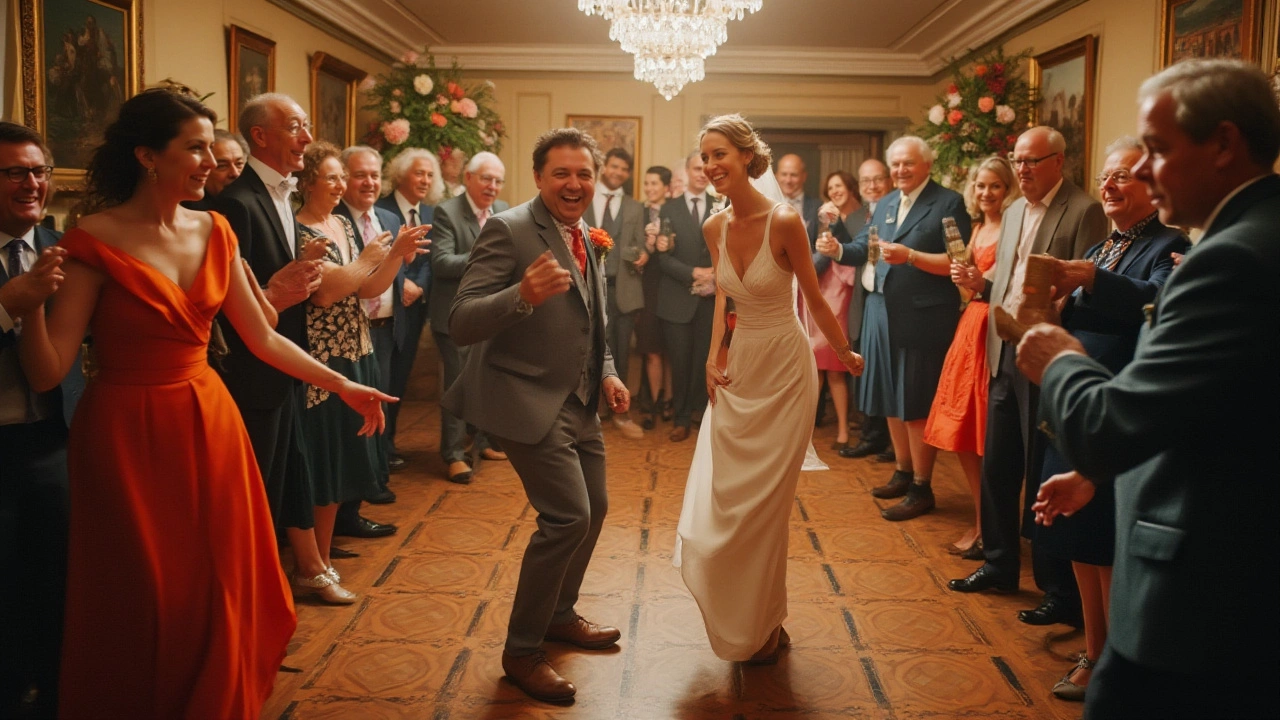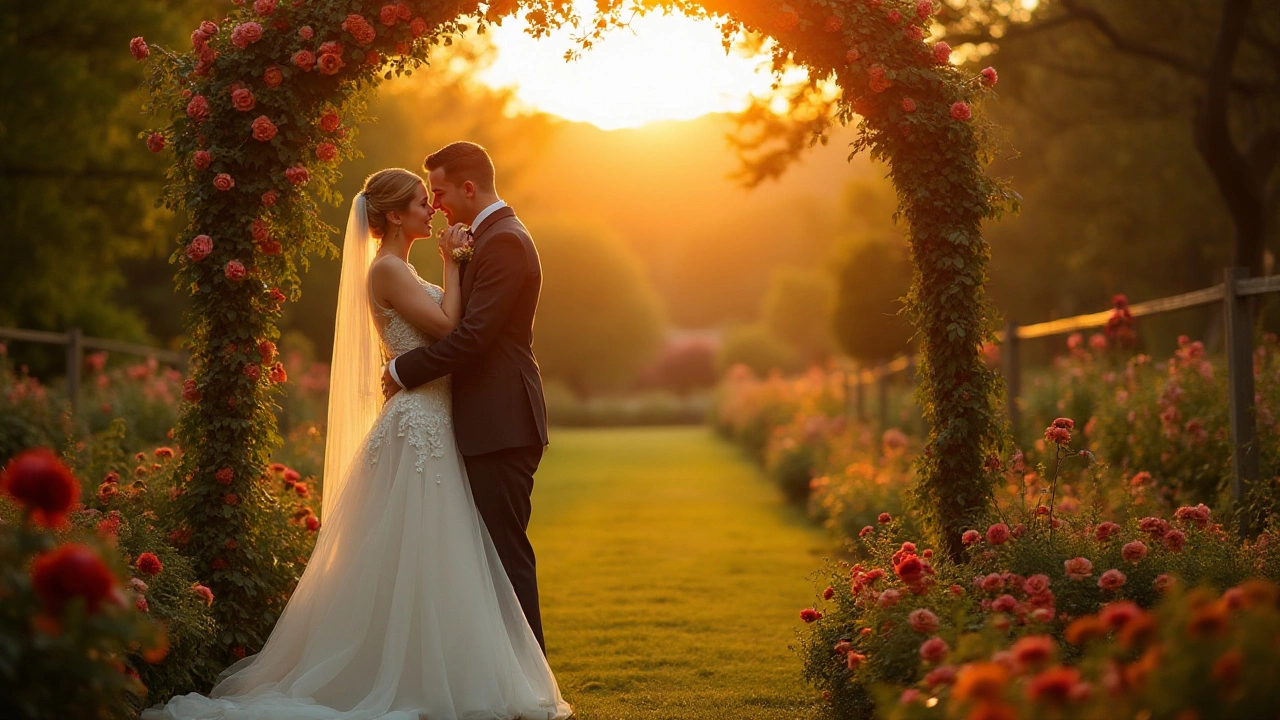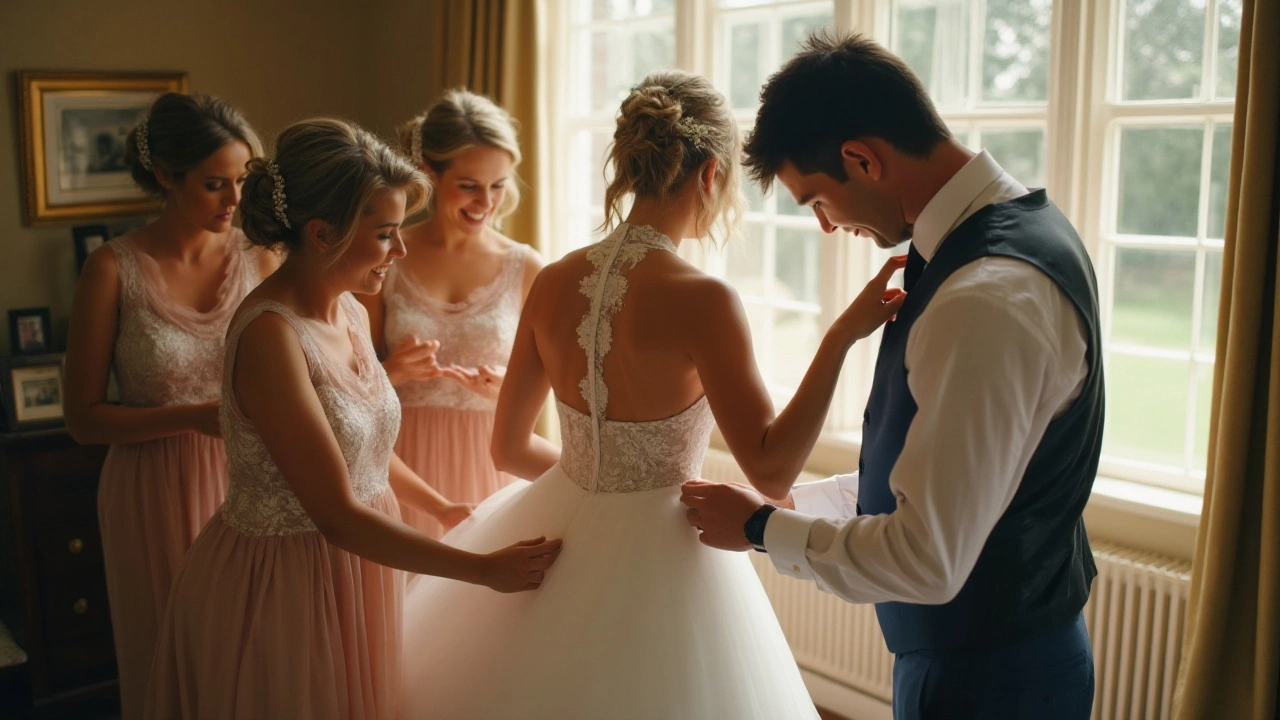Planning a wedding can be both exciting and a tad overwhelming, especially when it comes to preserving those precious memories through photography. One of the most common dilemmas couples face is deciding how many hours of photography coverage they need. Is ten hours enough to capture every special moment, from getting ready to the final dance?
Wedding days typically unfold in stages, each holding significant moments that you'd want to remember. In this article, we'll take a closer look at how a ten-hour photography package fits into the grand scheme of things. We'll explore key considerations like the day's timeline, tips from seasoned photographers, and how to tailor coverage to best suit your unique celebration.
- Understanding Wedding Day Timelines
- Considerations for Coverage Time
- Tips from Photographers
- Making the Right Choice
Understanding Wedding Day Timelines
The wedding day is packed with memorable moments and emotions that unfold through a carefully orchestrated sequence of events. It's vital to understand the typical flow of a wedding day to decide if a wedding photographer can capture it all in ten hours. Generally, a wedding day is structured around several core segments: getting ready, the ceremony, the portrait session, the reception, and all the delightful details in between. Each of these segments offers unique opportunities for stunning photography, with its own set of time demands. For instance, the 'getting ready' phase alone can span hours as it encompasses intricate details like hair, makeup, and those emotional first looks between the bride, groom, and their families.
Once preparations wrap up, the ceremony typically follows. This event's length can vary widely, depending on cultural traditions and religious elements. A conventional ceremony may last anywhere from 20 to 60 minutes, but one rooted in specific customs could last much longer. Each of these moments is significant, offering those natural, emotional shots that every couple cherishes. Next, the portrait session steps in. This is where the creativity of the wedding photography truly shines as the couple, bridal party, and family come together to create beautiful portraits. This session usually takes about an hour, more or less, depending on the number of locations and photos you'd like to include.
The big climax of most wedding days is, of course, the reception. Replete with heartfelt speeches, the all-important first dance, cake cutting, and perhaps a bouquet toss, the reception alone can stretch into several hours. Though each event progresses on a typical timeline, running smoothly from start to finish requires thoughtful planning and coordination. According to noted wedding planner Mindy Weiss, "Carving out a realistic timeline is crucial to ensure couples can relax and relish each moment without racing against the clock." A structured timeline ensures your wedding photographer is in the right place at the right time, ready to capture the magical moments that make your wedding unforgettable.
It is crucial to remember that these timelines aren't set in stone. They can be shuffled based on personal preferences, venue restrictions, and logistical considerations. Weddings often include personal touches like unique cultural traditions or surprise elements, which could elongate the timeline further. But if we had to sketch out a rudimentary timeline from a photography perspective, it could look like this:
- Getting Ready: 2-3 hours
- Ceremony: 1 hour
- Portrait Session: 1 hour
- Reception: 5-6 hours
Understanding this framework is key to assessing the adequacy of a 10-hour wedding photography package. Each couple's circumstances are unique, with aspects like the wedding size, location complexity, and the ambition of photographic goals playing pivotal roles in determining how many hours will suffice. Couples should communicate their specific vision to their photographer, planning together to create a schedule that ensures every treasured moment is preserved.

Considerations for Coverage Time
When deciding on the right amount of coverage for your wedding photography, several factors come into play that can significantly impact your decision. For many couples, wedding photography is not just about the ceremony and reception but also about capturing those tender moments before the celebrations begin. From the bride's preparation rituals to the nervous excitement of the groom, these moments are precious and often set the tone for the entire day.
The length of your ceremony is a crucial factor. Traditional ceremonies may require more time, with religious or cultural components adding to the schedule. Keep in mind the time needed for guests' arrivals and departures and transitions between different locations if your wedding spans multiple venues. By understanding these logistical demands, you can assess whether ten hours suffices to encompass all significant aspects of the event without feeling rushed.
An often overlooked yet important aspect is the time of year and the surrounding events you might have planned. Certain seasons, especially summer, can prolong the day with extended daylight hours, allowing more photographic flexibility. On the other hand, a winter wedding might have a shorter day's natural light, pushing you to maximize your chosen hours effectively. If cocktails, dinners, and dances are key highlights of your wedding, consider if they can be covered within your ten-hour window.
Wedding photographer expertise and style also influence coverage needs. Some photographers capture the essence of your day with a more curated, artistic approach, while others take a documentary style that may require a longer duration to capture those spontaneous, candid moments. As legendary wedding photographer Bambi Cantrell once said,
"Weddings are not about staged pictures, they're about capturing the real moments as they happen."This quote highlights the importance of selecting a photographer whose working style aligns with your vision and the amount of time you desire for capturing genuine emotions throughout the day.
Budget is another critical aspect when discussing hours of coverage. More hours often translate to higher costs, so it's crucial to balance the desire for extensive coverage with financial constraints. Couples should scrutinize what is included in the package and any bonuses for extending time. Some photographers may offer discounts for additional hours when pre-booked, allowing for customized packages that suit your coverage needs without breaking the bank.
Also, a practical way to decide is by reviewing a detailed timeline of your wedding events. This approach provides insights into potential gaps in coverage, identifying moments when professional photography is essential versus when personal snapshots suffice. For example, capturing the first look, speeches, or a sparkler exit versus guest mingling during cocktail hour could help you prioritize your photographer's time efficiently. Understanding the flow of your wedding against the planned ten hours is indispensable in ensuring nothing is overlooked.
A photography tips list can be beneficial for couples in planning their coverage. Collaborate with your chosen photographer to evaluate vital shots you would like within the timeline. Do they need extra minutes for certain group photos? Is there a special photography spot that requires travel during the day? By discussing these logistical details, you optimize the use of time while ensuring you capture all of the golden moments you desire in your lasting memories.
Ultimately, being well-informed about each aspect of your wedding and how it fits into the ten-hour window allows for informed decision-making. Remember, it's not just about the duration; it's about capturing memories that reflect the joy, laughter, and love of your big day. Whether ten hours is enough or not will largely depend on personal preferences and priorities. As you weigh these considerations, remember that this coverage is an investment in capturing one of the most special days of your life.

Tips from Photographers
The world of wedding photography is intricate and nuanced, filled with artistry and logistical precision. Photographers who specialize in capturing the vital moments of a wedding day have insights that can be incredibly useful when considering how long you want them to be present. Many seasoned photographers emphasize that communication with your chosen photographer is key. It’s important to share your vision, your must-have shots, and your timeline with them early on. This ensures they can offer their expertise on how to maximize those ten hours effectively. Cheryl Jensen, a photographer with over a decade of experience, once advised, "Being open about your schedule and expectations allows us to prioritize the moments that matter most to you."
In navigating the typical wedding day, many professionals suggest dividing the hours strategically. For example, allocate about two hours for the preparations alone. This not only captures the transformation but also the intimate moments and candid interactions shared between family and friends. Ceremony duration varies greatly, depending on cultural traditions or chosen rites, so it’s wise to ask your officiant for an estimate and communicate this to your photographer. The cocktail hour is another part of the day where some magic happens—a time for guests to mingle and offer genuine smiles, which are beautiful to capture. Lastly, the reception, often lively with dancing and toasts, can take up a chunk of the timeline, and photographing these spontaneous moments is crucial.
Besides strategic planning, another vital tip photographers offer is creating a detailed shot list. This list does not have to be exhaustive but should include essential moments you want immortalized, such as specific family portraits or thematic elements included in your reception decor. Many photographers agree this shot list can be a lifesaver, ensuring nothing is overlooked in the excitement of the day. Experienced photographers also recommend leaving a little flexibility—sometimes the most memorable photographs are unplanned and spontaneous.
When it comes to style, it’s crucial to select a photographer whose artistic vision aligns with yours. Some prefer journalistic photography, capturing candid moments naturally, while others want the traditional, posed shots. Meeting with potential photographers to view their portfolio can help you gauge their style and figure out if they can deliver what you imagine for your wedding day. Data suggests couples who communicate their style preferences ahead of time report higher satisfaction with their wedding photos.
Finally, photographers often stress the importance of lighting. Natural light can create stunning photos, so if possible, schedule parts of your day during golden hours—just after sunrise or before sunset—when the lighting is most flattering. For indoor shoots or evening receptions, discuss lighting options with your photographer to ensure they’re equipped to handle different scenarios effectively. Bringing these elements together helps in making sure every moment, from preparation to the sparkler send-off, is captured beautifully within those ten hours.

Making the Right Choice
When it comes to choosing how many hours of wedding photography coverage you'll need, understanding your priorities is key. Your wedding day is unique, and no two celebrations follow the exact same path. You might want to start by listing out what moments you absolutely can't live without on film. Do you dream of capturing the morning excitement as you and your loved ones prepare? Or is the heartfelt exchange of vows and the vibrant, joyous reception the core of what you’re after? Each couple's desires vary, so let these priorities guide your decision.
An often-overlooked aspect to consider is the timing of your wedding day events. A typical wedding can include pre-ceremony preparations, a ceremony itself, cocktail hour, the reception, and the send-off. A wedding photographer typically needs an hour to capture each key section of these events, even more, if you're planning a larger wedding. Discuss your vision with your photographer, explain the flow of your day, and ask for their professional input. Many photographers have witnessed countless weddings and can provide guidance based on what’s worked well in the past.
"Capturing a wedding isn't just about snapping pictures; it’s about preserving a timeline of emotions," says renowned photographer, Jasmine Star. "Consider what you'd regret not having a stilled image of a decade down the line."
Another factor to think about is the venue of your wedding. If you're hosting at a single location, that usually makes for more efficient use of your coverage time. But if your day involves transit between venues, you'll need to accommodate time for this in your photography package. Seasonality can also impact your choice. In winter months, daylight fades faster, which means tighter schedules to catch that natural light unless you're opting for a special lighting setup. On the other hand, summer weddings might afford longer timeframes, allowing a leisurely pace from prep to party.
Managing Budget without Sacrifice
Deciding on coverage hours also has practical implications for your budget. A ten-hour package is considered comprehensive enough for most weddings, but it's crucial to scrutinize what's included. Some photographers offer package expansions or extra hours at reduced rates if required. Look for photographers whose style resonates with your story, as quality often outweighs quantity when it comes to photography. If you're concerned about budget, but still want those unforgettable shots, work with your chosen photographer to find cost-effective solutions such as a second shooter or dedicated coverage for main events.
Finally, remember the timeless mantra: communication is key. Be open with your photographer about the essence of your wedding. Whether it's cultural traditions, a surprise flash mob, or a heartfelt farewell your family has practiced for generations, sharing these details ensures your photographer is prepared to catch everything. The value of a wedding photographer lies in their ability to capture those unexpected gems amidst the more predictable elements of a wedding day.
